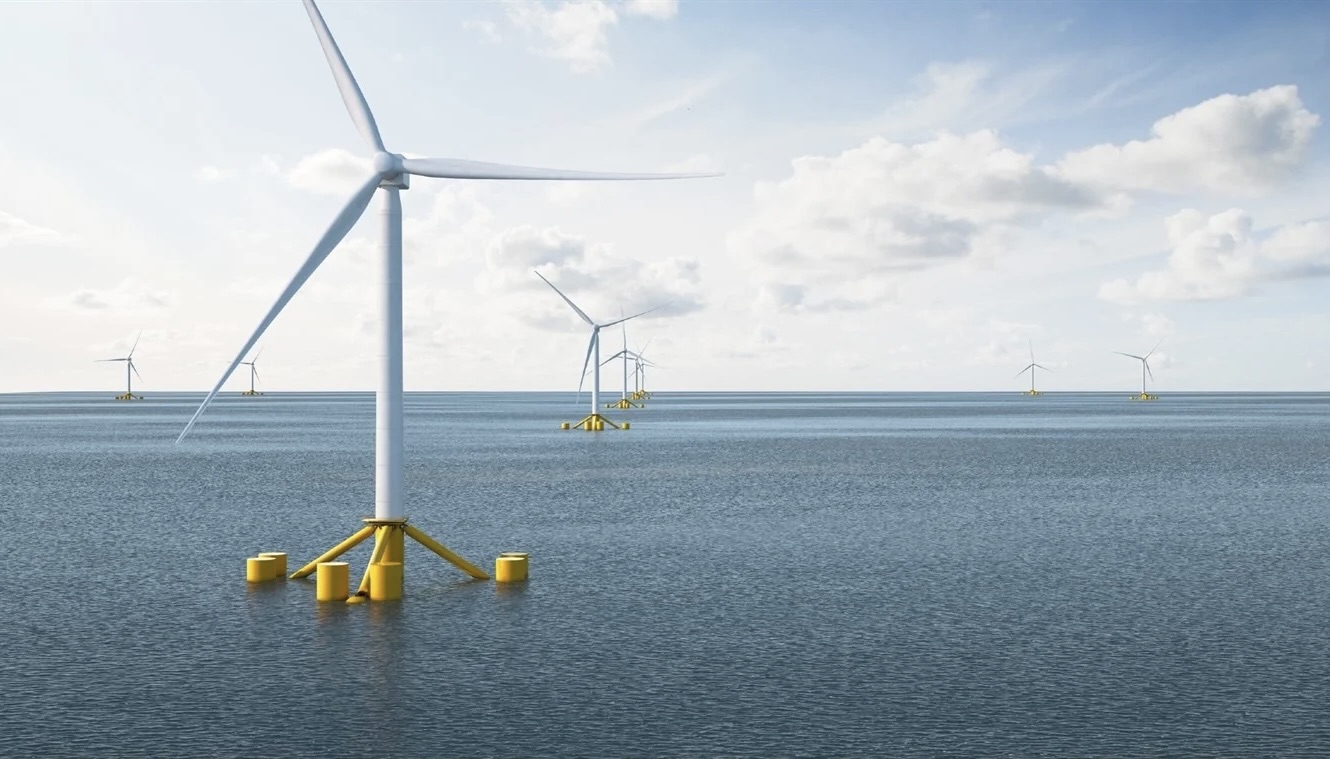Pentland Floating Offshore Wind Farm (PFOWF), a 100MW development key to advancing the global deployment of large-scale floating offshore wind, has selected Stiesdal Offshore’s TetraSub as the floating structure technology for the project.
 Representation of the Stiesdal Offshore Tetrasub. Image Credit: Pentland Floating Offshore Wind Farm
Representation of the Stiesdal Offshore Tetrasub. Image Credit: Pentland Floating Offshore Wind Farm
Developed by wind energy pioneer Henrik Stiesdal, the project’s chosen technology is the innovative Tetra concept by Stiesdal Offshore.
This Tetra concept is the world’s first fully industrialised floating offshore technology offering a lightweight and cost-effective floating foundation made up of factory-made modules. No manufacturing takes place at the quayside, instead these ready-made modules are assembled in ports using existing infrastructure to form a complete foundation. The process significantly reduces both manufacturing hours and transportation costs and enables assembly to take place domestically within local ports.
Speaking ahead of the Floating Offshore Wind UK 2022 conference in Aberdeen where the project is exhibiting, Richard Copeland, PFOWF Project Director, said: “The objectives of Pentland are to demonstrate new floating wind technologies which will enable industrialisation, develop local supply chains and reduce costs, allowing deployment of floating offshore wind in the UK and globally at scale. For us, the Stiesdal Offshore Tetrasub concept ticks all of these boxes.”
Peder Riis Nickelsen, CEO at Stiesdal Offshore said: “We are delighted that the TetraSub technology has been selected by PFOWF. This project will support us to meet market demands for low-cost and fast deployment of floating wind technology, advancing the next generation of floating offshore wind turbines with capacity of 14 MW and more. We look forward to working with the Pentland team to deliver this exciting world-leading development.”
Stiesdal Offshore has already been working to develop the Scottish offshore wind supply chain. In addition, Pentland Floating Offshore Wind has been working closely with Scottish Enterprise via its Scottish Development International and Scottish Manufacturing Advisory Service teams and DeepWind Offshore Wind cluster to introduce Scottish companies for supply opportunities at all levels.
Richard Copeland continued: “Stiesdal’s previous work is already providing valuable lessons for industry and Pentland through initiatives such as their tank testing work at University of Edinburgh’s world-leading FloWave research facility. The results of this testing confirmed the technology as one which was an ideal fit for the needs of the project.”
This activity exposed the TetraSub concept to conditions similar to those found at many floating offshore wind sites such as Pentland. The tests are ideal to assess robustness, reliability and effectiveness.
Suzanne Sosna, Director of Economic Opportunities and Climate at Scottish Enterprise, said: “Floating offshore wind presents huge potential not only for Scotland’s economy, but for companies the length and breadth of the country to take advantage of significant manufacturing and supply chain opportunities.
“Scottish Enterprise continues to support the Pentland Floating Offshore Wind Farm, and this announcement marks an important milestone for the project’s development.
“As the ScotWind leasing announcement earlier this year demonstrated, Scotland can lead the way in floating offshore wind. We look forward to working with developers, manufacturers and industry partners to maximise future opportunities and showcase Scotland’s unique global strengths in this sector.”
Once constructed the PFOWF is estimated to provide enough green energy for almost 70,000 homes per year, approximately 65% of those in the Highland Council area.
The project expects to install the first unit ahead of the wider array and be fully operational by 2026. PFOWF recently submitted its offshore consent application to Marine Scotland.
